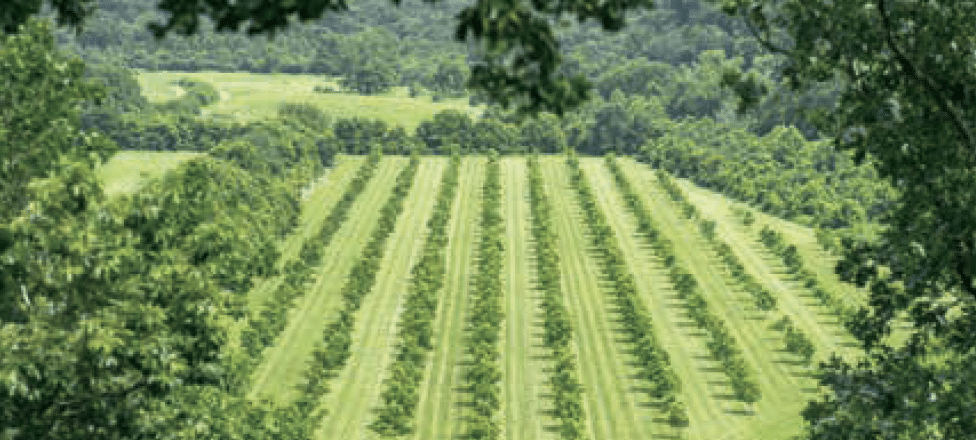Agroforestry, the practice of integrating trees and shrubs into agricultural landscapes, provides a range of environmental, economic, and social benefits. This sustainable land-use system boosts food production while tackling significant environmental issues like climate change, soil degradation, and biodiversity loss. This article provides an overview of the key benefits of agroforestry, based on the provided article and additional information from other sources.
1. Sustainably Increase Food Production
Agroforestry provides a natural solution for boosting food production while preserving ecological balance. By integrating trees with crops and livestock, agroforestry systems can generate a diverse array of products, such as fruits, nuts, timber, and fodder. Trees can also act as an energy source when their wood is burned. In addition to firewood, wood chips, and briquettes, pellets serve as wood fuel. Wood by-products can also be utilized for timber, fiber, and resin. This diversification strengthens food security and decreases reliance on single-crop systems, thereby making agriculture more resilient to market fluctuations and climate variability.
2. Environmental and Economic Security
Agroforestry plays a vital role in mitigating the effects of natural disasters, such as floods and storms, which can severely damage agricultural lands and local economies. Trees and shrubs enhance soil structure, reduce erosion, and boost soil fertility, making the land more resilient to extreme weather events. By stabilizing the soil, agroforestry protects farmland from degradation, ensuring long-term agricultural productivity and economic security for farmers.
3. Carbon Sequestration and Climate Change Mitigation
Carbon sequestration is one of the most significant environmental benefits of an agroforestry project. Trees absorb carbon dioxide from the atmosphere and store it in their biomass and soil, helping to mitigate climate change. However, deforestation releases stored carbon back into the atmosphere and eliminates the trees’ carbon-sequestering capabilities. Agroforestry systems, particularly those that use native tree species, have been shown to sequester more carbon than non-native species, making native species a powerful tool in the fight against global warming.
4. Improved Growing Conditions and Biodiversity
Agroforestry creates beneficial microclimates for crops and livestock by providing shade, reducing wind speed, and enhancing water retention in the soil. This results in improved growing conditions, increasing crop yields while decreasing the need for irrigation and chemical inputs. Additionally, agroforestry systems promote biodiversity by offering habitats for a variety of plant and animal species. The presence of trees and shrubs can improve water and air quality, further supporting sustainable livestock production. The practice of integrating trees, forage, and grazing livestock on the same land is known as silvopasture.
5. Restoration of Ecosystems and Habitats
Agroforestry plays a key role in restoring degraded lands and preserving natural habitats. By planting native trees and shrubs, it aids in revitalizing ecosystems disrupted by deforestation or intensive agriculture. Native species are especially effective in this process, as they are well-suited to local conditions and provide vital ecosystem services, such as pollination and soil enrichment.
6. Economic and Social Benefits
Agroforestry provides environmental benefits and economic advantages for farmers and rural communities. Diverse agroforestry systems can produce multiple income sources from timber, specialty crops like fruits and nuts, and other tree products. This diversification minimizes economic risks and can enhance livelihoods. Furthermore, agroforestry can generate job opportunities in rural areas, fostering social stability and community development.
Some of Forrest Keeling’s Favorite Specialty Crops
- Chokeberry: Rich in antioxidants, native chokeberries support wildlife and flourish in urban and rural environments.
- Elderberry: Recognized for its medicinal benefits, elderberry shrubs bear fruit rapidly and thrive in a variety of soil conditions.
- Pawpaw: The largest native fruit in North America, pawpaw, features a tropical flavor like mango and banana. It grows in partial shade and provides ecological and medicinal advantages, such as erosion control and potential anticancer properties.
- Pecan: A versatile nut tree that offers nuts with high nutritional value; pecans are excellent for long-term orchard production.
- Black walnut is suitable for both short-term and long-term agroforestry systems, yielding nuts and timber.
- Chestnut: This emerging, non-native crop produces gluten-free, nutrient-rich nuts, making it a sustainable choice for agroforestry systems. Chinese, European, and Japanese chestnuts serve as the foundation of global chestnut production.
7. Water Management and Soil Health
Agroforestry enhances water management by improving soil infiltration and decreasing runoff. Trees and shrubs help retain soil moisture levels, which is especially beneficial in arid and semi-arid regions. Tree root systems prevent soil erosion and enhance soil structure, resulting in healthier and more productive soils. Consequently, this reduces the reliance on chemical fertilizers and encourages sustainable farming practices.
Conclusion
Agroforestry is a flexible and sustainable land-use system that tackles many of the environmental and economic challenges faced by modern agriculture. By incorporating trees into farming systems, agroforestry not only boosts food production but also mitigates climate change, restores ecosystems, and offers economic advantages to farmers. As the world confronts the effects of climate change and environmental degradation, agroforestry presents a promising route toward a more sustainable and resilient future.
Forrest Keeling Nursery offers expertise and a wide selection of native species to help restore ecosystems and improve agricultural productivity. Contact us to discuss your project ideas or download our “Specialty Crops” brochure.
Specialty Crop Brochure

Detailed information on adding specialty crop trees and shrubs to your land.
